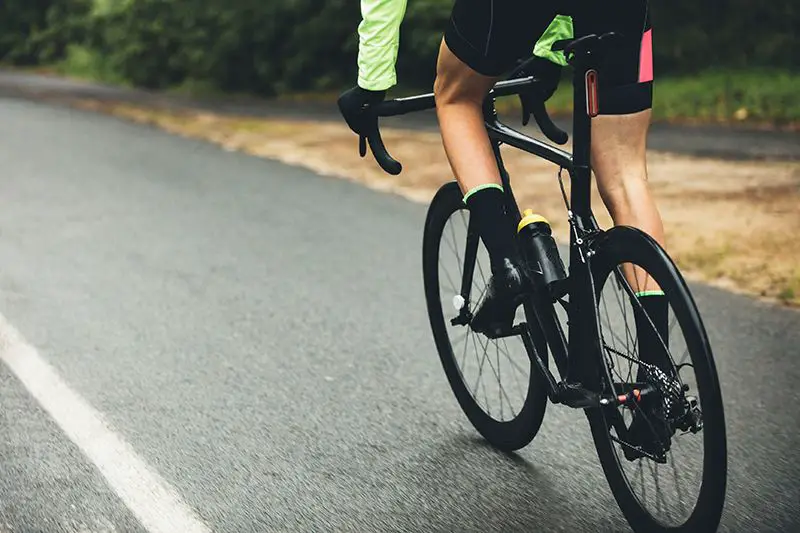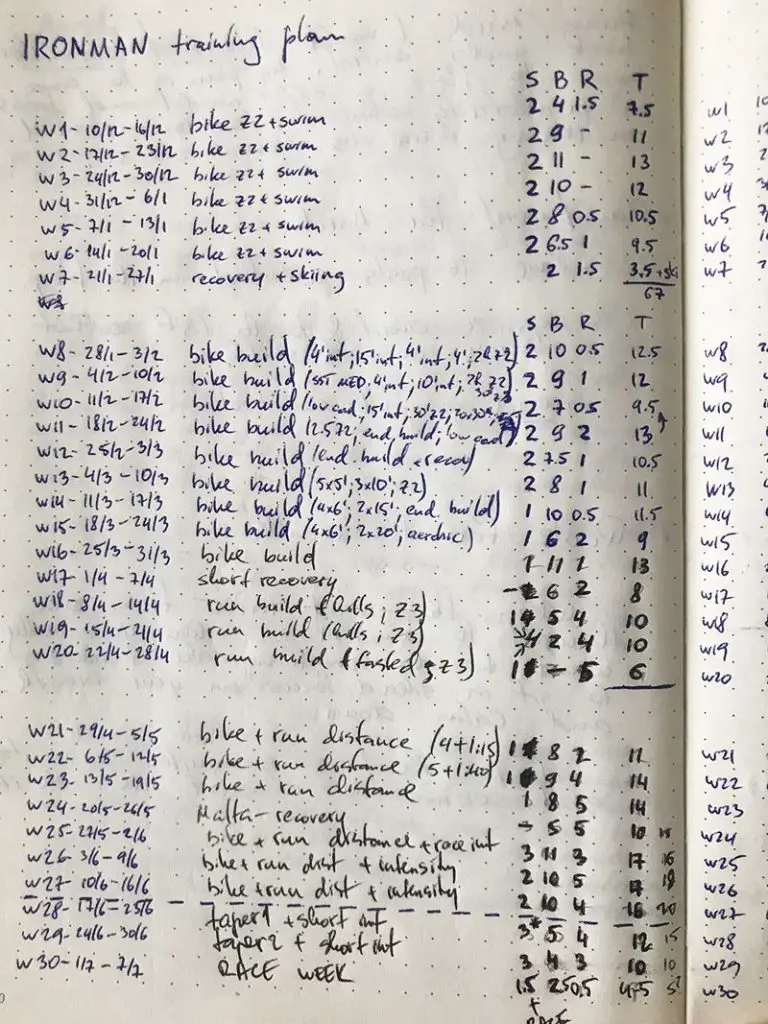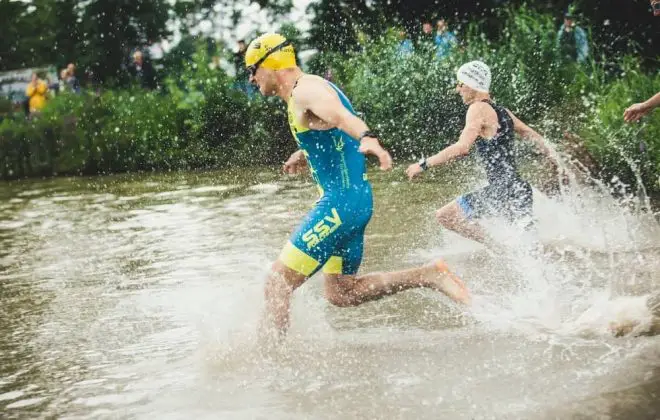How To Measure Post Workout Recovery And Avoid Accumulated Fatigue
There are two types of athletes. First there are those who seem to have figured it out. They put in the hard work and get results. And then there are those who do the same, but with little or no progress. Very often post workout recovery is the only missing piece.
Recovery is a critical period when the body grows stronger and adapts to a higher workload. Without effective post workout recovery athletes risk remaining in a state of accumulated fatigue and spoil all the magic they’ve worked for.
Athletes often neglect recovery, because it’s a vague and hard-to-measure concept. But is that really so?
What is the effect of training on the body?
Exercise puts a lot of stress on the body. Physical exertion promotes hormone production (growth hormone, testosterone, etc.) and results in mitochondria and myofibril growth.
That stimulates adaptation and, yes, makes people look and feel strong, young and lean. Also, all of this keeps us healthy and happy. And who doesn’t like that?
Training stress and certain level of fatigue is required to stimulate muscular and neurological adaptations.
However, in response to stress the body releases cortisol and adrenaline – hormones that need to be utilized. The body also goes through glycogen, water, vitamin and mineral supplies, adding even more to the total stress.
On top of that, excessive lengthening of the muscles during intense or prolonged exercise creates micro traumas in the tissue. This leads to inflammation and muscle soreness.
Post workout recovery and supercompensation
Training load, however, is only a trigger for adaptations. While intensity and periodization allow to focus on specific areas of training, recovery that follows is what does the real magic.
By the time we hit the shower our body starts recovering the damage from the session. Healing those micro traumas, growing muscle tissue, re-fueling and replenishing reserves. All of that has to be done before the next hard session for the body to operate at full potential.
The good news is that our body is super smart and highly adaptable. It doesn’t just sit and wait for the next training session to get beaten up again.
In response to stress the body grows stronger, so that next time it is able to tolerate the workload with less damage. Supercompensation is that process of adaptation and growing stronger.

So, post workout recovery is not only a 5-minute stretch and a glass of protein shake. Nor is it laying in bed for the rest of the day. Instead, it’s an opportunity for athletes to become stronger and faster. And the more careful the athletes will be about it, the faster they will improve.
Recovery speed
Speed of recovery is often tested as an indicator of athlete’s physical condition. If all factors held equal, athletes with better aerobic capacity will recover faster. That’s why general endurance and aerobic base is important for athletes across all sports – power, speed, endurance, team, etc.
Better overall endurance will also allow to tolerate more training load leading to better training results.
Depending on the intensity or length of the effort, complete recovery can take anywhere from a couple of hours to up to several days to take place.
Energy recovery after a hard effort is very quick compared to other processes. It takes seconds for Creatine Phosphate (CP) and several minutes for Adenosine Triphosphate (ATP) to recover. This process is usually completed during the cool down when the intensity is lower.
Carbohydrate recovery takes place within a couple of hours after the session. It may take several days, however, to fully replenish glycogen reserves after a prolonged effort.
Protein synthesis takes much longer and it may take up to 5 days to fully heal micro traumas in the muscles (i.e. like after running a marathon).
Short sprint efforts will typically require only a couple of hours of rest. Efforts of up to 10 minutes – from 6 to 8 hours. 5K or 10K done at max effort will take at least 24 hours for the body to recover from. Anything over an hour close to threshold effort will require several days of rest.
‘I’m too tired to exercise’ – classic symptom of accumulated fatigue
As we add more stress to our life – doesn’t matter, training or work-related – our immediate performance suffers. We feel tired, slow, lacking energy, our blood pressure and heart rate are up – you name it.
That drop in performance is sometimes wrongly associated with not enough training. So, athletes try to catch up and add even more volume and intensity, making the situation even worse.
If the hard effort takes place before complete recovery and supercompensation, we only dig a bigger hole for ourselves.
Fatigue is good in moderation. While it does stimulate hormone production and promote adaptation, without enough recovery it will build up over time and compromise results.
It’s kind of like when you spend more money than you earn. Over time you’ll find yourself in a serious debt.
Accumulated fatigue can paralyze the training process and leave athletes tired and demotivated. Usually it results in one or several of the following:
- Plateau/drop in performance
- Lack of energy or enthusiasm
- Low motivation and bad mood
- Slow recovery between intervals and/or sessions
- Anxiety or bad attitude in general
Doesn’t sound fun, right? My advice is to stay on the safe side. Once you feel even a slight development of one of the symptoms above – back off. Take an easy week, focus on Zones 1 and 2 efforts and give your muscles and nervous system time to recover fully. And then come back at it with full force.
Accumulated fatigue and immune system
When the body accumulates fatigue its defense systems become weak. Inflammation that takes place throughout the body and cortisol released in response to stress decrease the level of white blood cells, which promotes the growth of infections or viruses.
Therefore, during periods of high training loads athletes are at much greater risk of catching a cold or developing an illness. If that happens, they lose the momentum and fall back on their training.
Even one session at a wrong time can lead to illness and weeks away from training, so it’s better to stay cautious.

The Resilient Athlete
A Self-Coaching Guide to Next Level Performance in Sports & Life
Are you aiming to become a resilient athlete who is able to withstand any pressure? Be able to jump on any opportunity? Take any challenge life throws at you head on?
Then this book is for you.
Learn moreMeasure post workout recovery by listening to your body
What we want to do to avoid accumulated fatigue and have consistent gains is to target complete post workout recovery and supercompensation in the training process. Not training load itself.
There are lots of factors influencing recovery. Daily stress, past training, illness – everything impacts how athletes feel.
Instead of testing how you feel during the session it’s best to listen to the body and judge how well recovery is going. More often than not it’s better to switch training days to allow the body to achieve the optimal condition.
Muscle soreness. Sore muscles mean the body is still healing micro traumas. Such muscles will not be able to operate at full capacity.
Related: 14 Effective Ways To Reduce Muscle Soreness And Speed Up Recovery
Resting HR. A morning resting heart rate that is more than 4-5 beats above average (or over 10%) will signal that the body is still dealing with stress.
Blood pressure. Higher blood pressure means there’s tension in the body.
Sleep quality. More deep sleep promotes recovery, whereas tossing and turning does not allow the central nervous system to fully relax and allow the body to recover.
HRV. A bit more advanced tactic is to use the Heart Rate Variability (HRV) to test how recovery is going. It’s a measure of the consistency between individual heart beats. The less consistent the beats (variability higher), the less stress there is and the more recovered the body is.

Improve post workout recovery with a training plan
Training plan helps to keep athletes focused on the goal and balance fatigue with recovery. The plan has to take into account current stress levels, have a mix of high & low intensity work, as well as consider post workout recovery.
That plan may not be complex, but if training sessions take place at the right time, results will be amazing.
An athlete can push himself to the limit every day, yet still be slower than someone who trains 3 times per week and appears to put less effort in.
A well-developed training plan will give guidance when to push and when to back off.
Generally, you would want to add more volume/intensity and schedule key training sessions when you’re fully recovered. That is, after a period of reduced training load.
Consistency. It’s best to start the training plan easy and gradually build from there. If it’s too tiring – better step down. It’s more important to stay consistent than suffer, get tired and skip a week.
Gradual progression. To ensure constant improvement and avoid accumulating too much fatigue add no more than 10% progression to the training load per week. You can use either total time or Training Stress Score (TSS) as an estimate of fatigue.
80-20 rule. Majority of the training (~80%) should be at low intensity – Zones 1 and 2.
Recovery weeks. Training plan should contain a week of reduced duration (by ~30%) every 3-4 weeks. Take it easy during this time even if you’re not feeling tired.
Don’t be afraid to adjust the plan if you’re too tired to exercise
As much as we want to plan everything, life happens. Walking too much on a weekend while traveling or doing a push up challenge. Anything can happen and throw training off track.
Don’t be afraid to reduce the intensity of a session or take a day off if you’re feeling down. Nobody follows their training plan 100% – even the pros. Most of them structure their training around post workout recovery to execute key sessions well and keep the rest open.
In fact, many professional athletes get to the top not because of the Terminator-style training schedule, but in spite of that.
If you find yourself tired – re-assess how you feel, what led to this situation and re-plan accordingly. Adding an easy paced recovery session, cross-training or some mobility and core work instead of a hard program may even give better result than an interval session.
After all, muscles are getting their stress, body is getting its hormones. And that’s all that matters.
Did you find this information useful? Share the post with others using the buttons below.
Have an opinion? Share via links below and tag @theathleteblog
Andrejs
GET A FREE TRAINING PLAN
Subscribe to my email list and get access to a free 4-week “back in shape” training plan
You’ll also get two full-body strength sessions and some other goodies!

How did I get here?
Hey there! My name is Andrejs and I am here to inspire, entertain and get you fit for any adventure.
I went from being an over trained pro athlete to an endurance coach sharing how to listen to your body and live life to the fullest.
Traveling, new sports & activities brought new meaning to my training and made it much more effective, fun and enjoyable. And I'm here to help you do the same.


